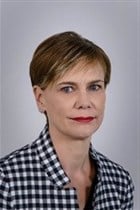[BizTrends 2016] Africa's 2016 factors for success
![[BizTrends 2016] Africa's 2016 factors for success](https://biz-file.com/c/1601/327465.jpg)
These are the key factors shaping sustainable growth potential in Africa's dynamic marketplace in 2016:
1. Attraction vs. Action
Current global attention on Africa is largely focussed on macro-economic factors such as population, growing economies, urbanisation, rising per capita GDP and previously untapped consumer needs. However, with 54 individual and unique countries, an array of diverse consumer segments and challenging infrastructure and developmental environments, success is actually determined by integrated, multi-dimensional indicators extending beyond the macro-economic figures.
For example, Ethiopia is one of Africa's most attractive markets by macro standards, with more than 90 million people (4 million in Addis Ababa alone). However, on the ground it has poor road/rail connectivity, a largely traditional trade environment and a multitude of consumer preferences, spending and shopping dynamics.
What investors can accomplish within that market may therefore be far more limited than initially thought. In contrast, smaller but easier to reach markets, such as Rwanda or Botswana, can provide a more fertile, although initially lesser considered, opportunity.
KEY INSIGHT: Adopt a planning- and execution-based approach, where actionable variables outweigh initial attraction factors.
2. Confidence to Consumption
Africa is home to some of the most confident nations in the world. For example, Nigeria and Kenya have one of the most optimistic consumer confidence scores, together with other developing markets like China, Philippines and India. However, despite the fact that consumer confidence in developing markets is an expression of positivity, it is less likely to be the most representative indicator of consumers' ability to spend or their actual spend, as there is often a low correlation between income and confidence.
KEY INSIGHT: With deeper consumer understanding and knowledge of shopper spending dynamics, sentiment can be converted into spend, through suitable ranges of products, packages, variants and promotion, optimised for the consumer spectrum in good and bad times.
3. Middle Class: Mountain or Mole Hill?
Africa's middle class, by income definition, is estimated at between 300 million and 500 million people, similar in size to China and India, and set to double by 2030. However, the majority of the sub-Saharan Africa (SSA) middle class (217 million) is considered 'floating' (148 million or 68%), drifting in and out of poverty based on daily earnings of US$2-4. This floating group is more likely considered as variable potential, with the true accessible potential of the SSA middle class only around 69 million people.
In addition, in light of Africa's 54 diverse countries, tapping into the accessible middle class needs to be assessed in relative and absolute terms. Countries with a higher proportion (%) of middle class consumers include: Gabon, Botswana, Ghana, Namibia and South Africa, whilst countries with a higher absolute number of middle class consumers include: Nigeria, South Africa, Ethiopia, Kenya and Ghana.
Income numbers alone as the definer, therefore do not portray a complete picture, increasingly a middleclass needs to be distinguished by mindset, which includes openness to try new products, brand consciousness, shopping behaviour, store repertoires, media influence, access and use of technology, spend composition on food vs. non-food and other items.
KEY INSIGHT: Redefine middle class opportunities and strategies based on a broader range of consumer-based factors, with market-by-market tactics.
4. Languid or Loyal
Africa's consumers are characterised as being highly loyal to products and brands. This is determined by their purchase drivers, which emphasise choice based on considerations such as recommendation from friends and family, known/familiar/tried brands as well as brands that are easily available. The reality, however, is that consumers are unable to make costly mistakes by trying new brands when disposable income is low, and brand choice or ranges are small in terms of what is available, which has meant consumers stick with what they know.
KEY INSIGHT: Loyalty may be short lived for brands that were previously the 'only ones there'. As more optimal products enter markets and provide solutions to real consumer needs, penetration and recommendation alone will no longer be the determinant of loyalty.

About Ailsa Wingfield
Ailsa Wingfield is Executive Director: Intelligence for Nielsen Global Markets. She helps companies capture today and tomorrow's prospects by identifying and exploring demand generating trends through strategic foresight, knowledge and thought leadership creation. With a passion for Africa and Middle East, she established the Africa Prospects Indicator which determines overall country prospects and the sources of potential, across economic, business, consumer and retail metrics. Ailsa has extensive experience working with global and local brands in multiple countries across the consumer goods, media and telecommunications industry.








